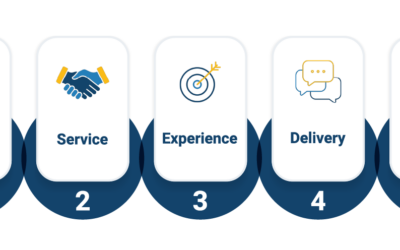It’s the turn of the 20th century, and like most salespeople of this era, you are riding a company horse from business to business to peddle your wares. Imagine during this time that someone approached you and said, we’re going to give you an automobile instead. How would you react? Would you fear this new technology? Would you express discomfort? You might even wonder if this car thing is going to last.
Fast forward to today, and as in the world of our ancestors, the sales landscape is again taking giant leaps forward. Factors like digital transformation, a global pandemic, and increased competition have threatened our conventions and beliefs, and forced changes in the way business is conducted. Rather than resist, it’s critical to adopt an agile posture in order to survive and thrive in the “what’s coming next.”
The Brooks Group recently partnered with Tom O’Shea, principal at Agility Consulting and Training and an expert on business agility, to explore this sensation in greater depth. What we discovered is this: A “VUCA” world – one that is volatile, uncertain, complex, and ambiguous – requires us, as sales leaders, to usher in an “Age of Agility” among our sales professionals.
In order to separate the “agile from the fragile,” as O’Shea says, and navigate the VUCA world, you have to truly commit to a journey in which your competitive advantages are sharpened, and your vision is keenly focused on the future. It’s the only way to succeed in a disruptive world which has experienced a combination of factors which O’Shea calls “steroids of change.”
“In the fog of the future, we need to take control of our sales efforts, because the rest of the company depends on what we do,” said O’Shea. “We have to systematically anticipate future changes, so we’re able to look around the corner and be proactive, rather than be caught off guard.”
A great example of this, according to O’Shea, is what restaurants have gone through during the days of COVID. They had to go from indoor dining to takeout overnight, and then, out of necessity, to construct outdoor eating areas to encourage customers to return. At each step, restaurant owners needed to exhibit agility to ensure survival and relevance, and to weather the changes forced upon them.
The recipe for creating a sales agility advantage at your company, says O’Shea, boils down to these 10 attributes:
- Rampant communications: Reach out to your buyers, early and often, with a high level of confidence.
- Open Zoom meeting forums: Create access, engagement, and a free-flowing forum for ideas.
- Virtual sales training early on: Find a customizable, flexible virtual training program that reflects the current-day sensibilities of your marketplace and gives you the tools for sales success.
- Discover how to market with $0: Be determined to stretch your marketing budget – embrace and own social media and other free channels of communication.
- Greater frequency of market research: Poll the marketplace dynamically, so you can adjust your strategy as needed.
- Frequent strategy review sessions: Make sure your sales techniques are still effective and your value proposition still resonates with the marketplace.
- Embrace change – future focus: Look out in front of the bus and not the rear-view mirror, since the pace of innovation is coming quickly, and resides in the road not yet traveled.
- Work closely with executive management: Leadership buy-in is necessary to move at an agile pace.
- Read everything you can to help: Be a voracious consumer of news and information about your marketplace, industry trends, and competition.
- Continuous upskilling: Climb the ladder of success through a commitment to ongoing improvement.
Finally, think of agility like a “heartbeat” within your organization. The faster your heart beats, the quicker your pace in embracing change. Be agile, pivot, and be open to change – or one day you may wake up and find that the changes have been made for you.
Need to build a more agile sales organization? Contact us and one of our team members will reach out.



